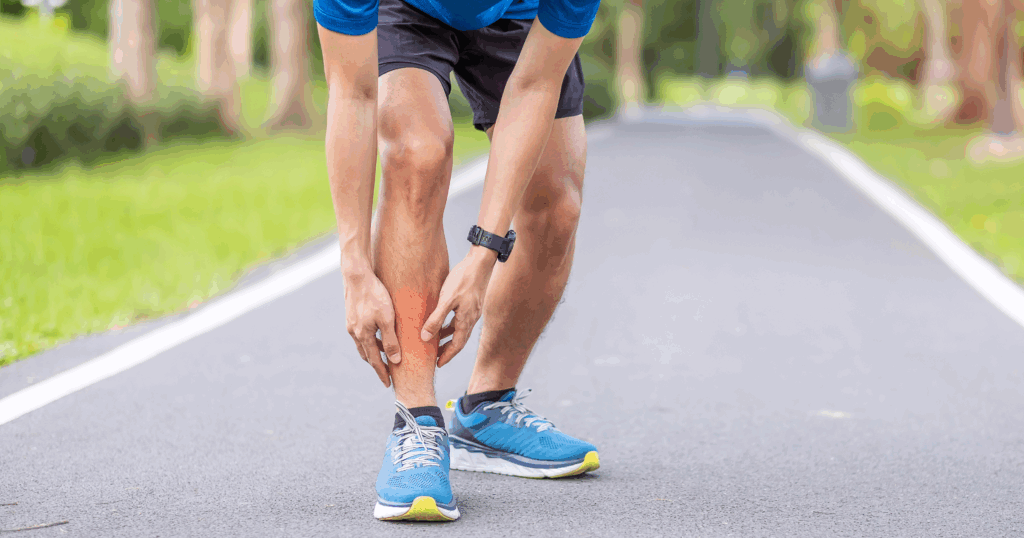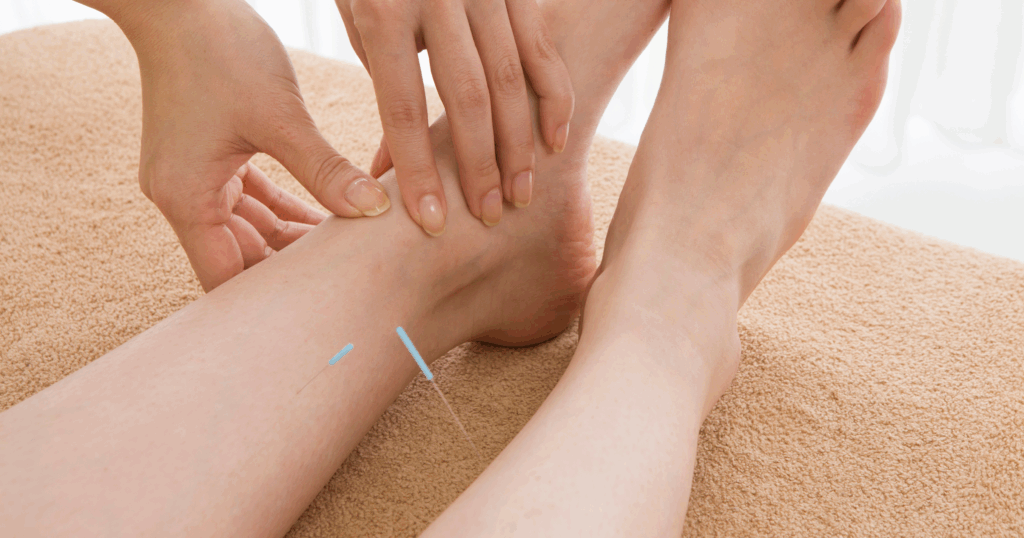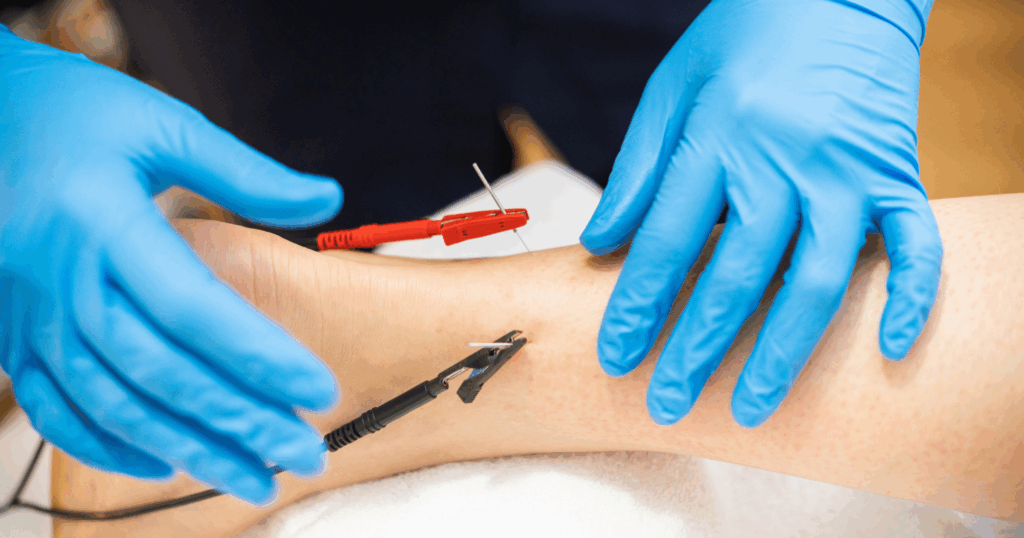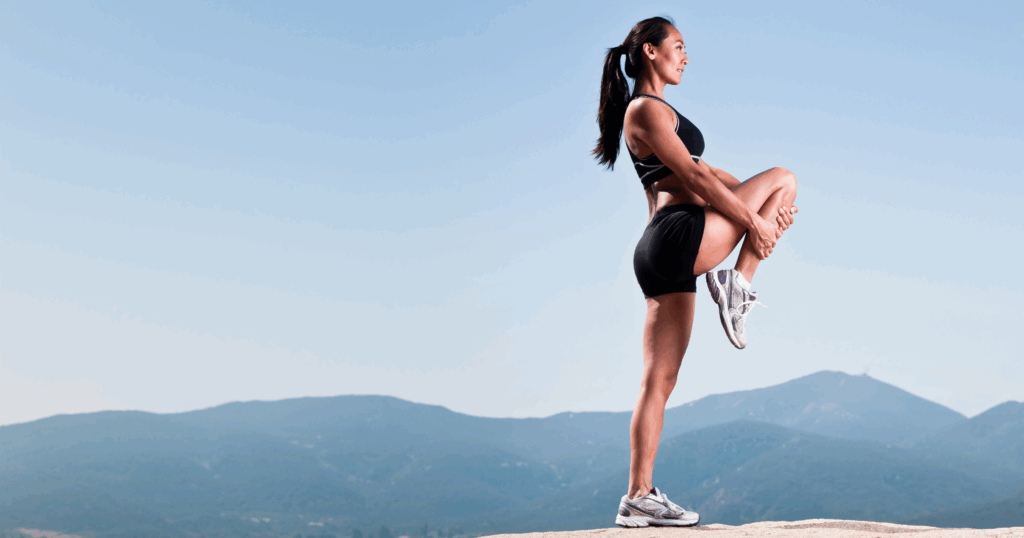Acupuncture for Shin Splints: Effective Strategies to Heal and Prevent Recurrence
Shin splints can feel like an unrelenting shadow for many athletes and active individuals-a persistent, nagging pain along the front or inner edge of the shinbone that disrupts training, limits performance, and chips away at motivation. Medial Tibial Stress Syndrome, as it is clinically known, is more than just soreness; it is a signal from the body that something is out of balance. For runners, dancers, and sports enthusiasts alike, shin splints can be a frustrating barrier that feels impossible to overcome without long periods of rest or invasive treatments.
Traditional approaches often focus on rest, ice, anti-inflammatory medications, and physical therapy. While these methods can be effective, they sometimes fall short of addressing the deeper causes or providing lasting relief. This is where acupuncture, an ancient healing art rooted in Traditional Chinese Medicine (TCM), offers a compelling alternative. Beyond simply managing symptoms, acupuncture works holistically-targeting pain, inflammation, circulation, and muscle tension to facilitate true healing.
Acupuncture for Shin Splints: Effective Strategies to Heal and Prevent Recurrence
Shin splints can feel like an unrelenting shadow for many athletes and active individuals-a persistent, nagging pain along the front or inner edge of the shinbone that disrupts training, limits performance, and chips away at motivation. Medial Tibial Stress Syndrome, as it is clinically known, is more than just soreness; it is a signal from the body that something is out of balance. For runners, dancers, and sports enthusiasts alike, shin splints can be a frustrating barrier that feels impossible to overcome without long periods of rest or invasive treatments.
Traditional approaches often focus on rest, ice, anti-inflammatory medications, and physical therapy. While these methods can be effective, they sometimes fall short of addressing the deeper causes or providing lasting relief. This is where acupuncture, an ancient healing art rooted in Traditional Chinese Medicine (TCM), offers a compelling alternative. Beyond simply managing symptoms, acupuncture works holistically-targeting pain, inflammation, circulation, and muscle tension to facilitate true healing.
Key Takeaways
-
Acupuncture provides immediate pain relief for shin splints by releasing endorphins and blocking pain signals in the nervous system.
-
Inflammation linked to shin splints can be reduced through acupuncture, helping calm irritated tissue around the shinbone.
-
Targeted acupuncture points boost local blood flow, accelerating recovery by delivering oxygen and nutrients to damaged muscles.
-
Tight or imbalanced leg muscles contributing to shin splints are relaxed and corrected using acupuncture and dry needling techniques.
-
When combined with physical therapy and lifestyle changes, acupuncture becomes a powerful, long-term solution for preventing shin splints.
Understanding Shin Splints

Several factors contribute to the development of shin splints:
- Overuse and repetitive stress: Sudden increases in running distance or intensity without adequate conditioning.
- Biomechanical imbalances: Flat feet, high arches, or improper gait mechanics that place uneven stress on the lower leg.
- Inappropriate footwear: Shoes lacking proper support or cushioning can exacerbate strain.
- Running surfaces: Hard or uneven terrain increases impact forces on the legs.
Symptoms typically include a dull, throbbing ache along the inner or front edge of the shin, tenderness to touch, and sometimes swelling. Left untreated, shin splints can worsen, leading to stress fractures or chronic pain that sidelines athletes for months. The impact on daily life and athletic performance can be profound-simple tasks like walking or climbing stairs become painful, and the mental toll of interrupted training can be discouraging.
How Acupuncture Helps Shin Splints

Acupuncture’s power lies in its ability to engage the body’s innate healing mechanisms on multiple levels simultaneously. When we insert fine needles into specific points, we’re not just targeting the site of pain; we’re influencing the nervous system, immune response, blood flow, and muscular function.
Pain Relief through Endorphin Release and Neural Modulation
One of the most immediate and noticeable benefits of acupuncture is pain relief. By stimulating specific acupoints, acupuncture triggers the release of endorphins-our body’s natural painkillers-which help to diminish pain sensations. Beyond this, acupuncture modulates pain pathways in the spinal cord and brain, effectively reducing the transmission of pain signals. This dual mechanism not only alleviates discomfort but also allows patients to move more freely, making rehabilitation and daily activities more manageable.
Reducing Inflammation at the Source
Inflammation is the core culprit behind much of the discomfort experienced with shin splints. Acupuncture helps regulate the immune response by promoting the release of anti-inflammatory substances and reducing pro-inflammatory mediators in the affected tissues. This targeted reduction in inflammation decreases swelling and irritation around the tibia’s periosteum, which is essential for breaking the cycle of pain and tissue damage.
Enhancing Local Blood Circulation for Faster Healing
Improved blood flow is critical in healing shin splints, and acupuncture excels in this area. By stimulating acupoints along the lower leg meridians, acupuncture enhances microcirculation, delivering oxygen and vital nutrients to damaged tissues while facilitating the removal of metabolic waste products. This enhanced circulation supports cellular repair and accelerates recovery beyond what rest alone can achieve.
Releasing Muscle Tightness and Correcting Imbalances
Muscle tightness and imbalances in the tibialis anterior, tibialis posterior, and calf muscles often contribute to shin splints by placing uneven stress on the shinbone. Acupuncture relaxes these overworked muscles, releasing trigger points and restoring flexibility. What makes acupuncture particularly effective is its holistic approach-it also addresses related systemic imbalances, such as hip tightness or digestive issues, which may indirectly affect leg function and recovery. By treating these underlying factors, acupuncture not only alleviates current symptoms but also helps prevent recurrence.
Acupuncture Treatment Protocol for Shin Splints
Every treatment begins with a thorough assessment to understand your unique symptoms, medical history, lifestyle, and activity levels. This personalized approach ensures that acupuncture is tailored to your specific needs rather than applying a one-size-fits-all solution.
Several acupuncture points are commonly targeted for shin splints, chosen for their anatomical and energetic relevance:
- ST36 (Zusanli): Known for boosting overall energy and immune function, it also supports leg strength and circulation.
- ST37 (Shangjuxu) and ST38 (Tiaokou): Located along the stomach meridian, these points influence the lower leg muscles and help reduce inflammation.
- SP6 (Sanyinjiao) and SP7 (Lougu): These spleen points help regulate fluid metabolism and reduce swelling.
- GB34 (Gallbladder 34): A key point for muscle and tendon health, aiding in muscle relaxation and repair.
- Local Ashi points: Tender spots along the edge of the tibia where microtearing occurs are carefully needled to stimulate healing.
In many cases, dry needling techniques are incorporated to directly release tight trigger points within the tibialis muscles and calves. This is often complemented by electroacupuncture, which applies gentle electrical stimulation through the needles to enhance circulation, reduce inflammation, and promote muscle endurance.
Typically, sessions last between 30 to 60 minutes and are scheduled once or twice a week. Most patients notice significant symptom relief within 2 to 6 weeks, depending on the severity and chronicity of their shin splints. During treatment, we emphasize the importance of modifying activities-avoiding high-impact exercises like running or jumping-to allow the tissues to heal without further strain.
Electroacupuncture for Enhanced Results
Electroacupuncture takes traditional acupuncture a step further by delivering controlled electrical pulses through the needles. This technique amplifies acupuncture’s therapeutic effects, making it especially beneficial for stubborn or severe shin splints.
The electrical stimulation increases endorphin release beyond what manual needling achieves, providing deeper and longer-lasting pain relief. It also enhances blood flow more effectively, which speeds up the resolution of inflammation and tissue repair.
For athletes eager to return to training, electroacupuncture offers a way to reduce muscle tightness and improve function more quickly. By stimulating motor points within the lower leg muscles, it helps restore muscle balance and endurance, preventing the vicious cycle of overuse injury that leads to shin splints.
Scientific Evidence and Clinical Studies
While acupuncture’s benefits are often described through traditional frameworks, modern research increasingly supports its effectiveness for shin splints. A landmark 2002 randomized controlled trial compared acupuncture, standard sports medicine, and a combination of both in treating tibial stress syndrome. The acupuncture group reported significantly greater pain relief during activity and rest, reduced reliance on anti-inflammatory drugs, and improved overall function compared to the sports medicine group alone. The combined treatment group also showed benefits but not as pronounced as acupuncture alone.
More recent studies have explored techniques like interosseous membrane acupuncture and the use of dry needling combined with electroacupuncture, confirming clinically significant reductions in pain and faster recovery times. These findings highlight acupuncture’s potential not just as a complementary therapy but as a frontline treatment for shin splints.
That said, research continues to evolve, and larger-scale studies are needed to refine protocols and understand long-term outcomes. Still, the existing evidence, paired with clinical experience, paints a promising picture.
Integrating Acupuncture with Other Treatments
Acupuncture shines brightest when integrated into a comprehensive treatment plan.
Synergy with Physical Therapy and Exercise
Combining acupuncture with physical therapy allows us to address not only pain but also the underlying muscular imbalances and biomechanical issues that contribute to shin splints. Stretching and strengthening exercises complement acupuncture by improving muscle endurance and flexibility, which helps protect the tibia from repetitive stress.
Importance of Biomechanical Assessment
A detailed biomechanical evaluation-including gait analysis and footwear assessment-is essential. These assessments help identify structural issues like overpronation or improper foot alignment that exacerbate shin splints. Orthotics or shoe modifications can then be recommended to redistribute forces more evenly across the lower leg, reducing strain on the tibia.
Lifestyle and Training Modifications
Adjusting training routines is equally important. Gradual progression in running distance and intensity, incorporating cross-training, and ensuring adequate rest periods all support the healing process initiated by acupuncture. These lifestyle changes reduce the risk of recurrence and promote long-term resilience.
Multidisciplinary Approach for Lasting Recovery
The most effective care involves collaboration among acupuncturists, physical therapists, sports medicine doctors, and trainers. This multidisciplinary team approach ensures every aspect of your health and athletic performance is addressed, providing a holistic path to recovery and prevention.
Why Acupuncture is a Game-Changer for Shin Splints Recovery
Shin splints can be a painful and discouraging obstacle, but they don’t have to define your athletic journey. Acupuncture offers a powerful, multifaceted approach to healing-relieving pain, reducing inflammation, enhancing circulation, and restoring muscle balance. By addressing both the local injury and the systemic imbalances that contribute to it, acupuncture helps you heal smarter, not harder.
If you’re struggling with shin splints and seeking a treatment that goes beyond temporary relief, consider acupuncture as part of your recovery plan. At ACA Acupuncture & Wellness, we are dedicated to combining the wisdom of Traditional Chinese Medicine with modern clinical insights to support your well-being and athletic goals. Together, we can help you overcome shin splints and get back to the activities you love with renewed strength and confidence.
Source:
Riegleman, D. L., & Creech, J. A. (2020). Successful Treatment of Medial Tibial Stress Syndrome with Interosseous Membrane Acupuncture: A Case Series. Medical Acupuncture, 33(2), 150–152. https://doi.org/10.1089/acu.2020.1448
Frequently Asked Questions
Does acupuncture help shin splints?
Yes, acupuncture can be highly effective in treating shin splints by targeting specific points to reduce pain and inflammation while improving blood circulation to the affected area. It stimulates the release of endorphins, the body’s natural painkillers, and helps relax tight muscles around the shin, promoting faster healing and better function. Clinical studies have shown that acupuncture often leads to significant pain relief and reduced reliance on anti-inflammatory medications in athletes with shin splints.
What is the fastest way to heal shin splints?
The fastest recovery usually involves a combination of rest, activity modification, and targeted therapies. While rest and ice reduce acute inflammation, integrating acupuncture can accelerate healing by enhancing circulation and reducing muscle tightness. Additionally, addressing biomechanical issues through proper footwear, gait analysis, and strengthening exercises is crucial. Combining these approaches with acupuncture often leads to quicker symptom resolution than relying on any single treatment alone.
Can shin splints be massaged out?
Massage can help relieve muscle tightness and improve circulation around the shin, which may reduce some symptoms of shin splints. However, massage alone may not fully resolve the underlying inflammation or biomechanical causes. It is best used as a complementary therapy alongside rest, stretching, and other treatments like acupuncture or physical therapy to address both symptoms and root causes effectively.
Does dry needling work for shin splints?
Dry needling, which involves inserting fine needles into trigger points within tight muscles, can be effective for shin splints by releasing muscle knots and improving local blood flow. It is often integrated with acupuncture treatments to target the tibialis anterior and posterior muscles directly, helping to reduce pain and muscle tension. Many practitioners combine dry needling with electroacupuncture for enhanced results in managing shin splints.
Does a massage roller help shin splints?
Using a massage roller can assist in loosening tight calf and shin muscles, promoting blood flow and reducing muscle soreness. While it may provide temporary relief and aid recovery, massage rollers should be used cautiously to avoid aggravating inflamed tissues. They work best as part of a broader rehabilitation plan that includes rest, stretching, strengthening, and therapies like acupuncture.
What not to do with shin splints?
Avoid continuing high-impact activities such as running or jumping when experiencing shin splint pain, as this can worsen inflammation and delay healing. Do not ignore pain or push through discomfort, as this may lead to stress fractures or chronic injury. Avoid improper footwear and sudden increases in training intensity. Also, refrain from self-treating with aggressive massage or stretching that causes pain. Instead, seek professional assessment and incorporate gradual activity modification alongside therapies like acupuncture for safe recovery.
Contact ACA Acupuncture & Wellness
Get in Touch
Newsletter Sign Up
LOCATIONS
MANHATTAN
QUEENS
NEW JERSEY
CALIFORNIA

ACA Franchise Opportunities
The over $4 billion US acupuncture market offers a great opportunity with over 10% annual growth rates and a continuing flow of new patients interested in the benefits of acupuncture.





